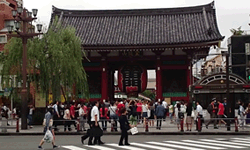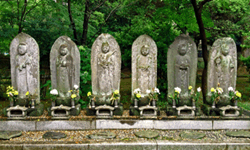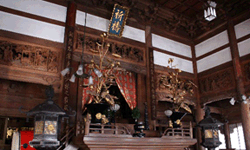
English | Japanese

English | Japanese



Buddhism is “Bukkyo” (meaning the teaching of Buddha) in Japanese, founded in India and introduced through China and Korea to Japan in the 6th century. Since then, it teaches a way to enlightenment and has influenced a lot on the spiritual
and cultural life of the Japanese.
Especially, Zen Buddhism, introduced in the 13th century when starting the Samurai age, has greatly influenced many aspects of Japanese culture including a tea ceremony, flower arrangements,
landscape gardening and education etc.
In temples (“Tera” in Japanese), what can you find?
You may usually find its main Buddhist statue and guardian statuses, such as a Nyorai statue with some Myo-Ou statues.
Generally, Norai has already attained the enlightenment. All statues are considered to be a different step of becoming Buddha. Not only in temples, but you can also find Jizo Bosatsu (Bodhisattva) on many roads and streets. Jizo
is the patron saint of travelers, children and pregnant women. When you find Jizo statues, you can pray for the safety of your travel.
You'll also find a tree- or five-storied wooden pagoda in the precinct of a big temple, where is said to house ashes from the Buddha. Each roof of the pagoda has a special meaning such as expressing water and fire. Many
pagodas were constructed to be earthquake proof structure, which is utilized for the modern high construction such as the Tokyo Skytree.
Some temples also have a big “Tsurigane”, the bell. It was originally used to sound
the hours of the day. It is known to be used to strike 108 times on New Year’s Eve. It is said that people usually have 108 worldly sins in mind and by sounding the bell, people may repent and remove such 108 sins in the year and
welcome the New Year.
A temple was also used for teaching writing and reading. During Edo period, temples grasped the people living there since registration at a temple was compulsory for every family. The word "Terakoya"
(a temple small house) means a school for the children of commoners or even to adults. Not only in a temple, such education system of Terakoya was performed widely, so the literacy rate around 1850 was 70-85% in Edo, while the
one in some industrial cities in England was just 20-25%.